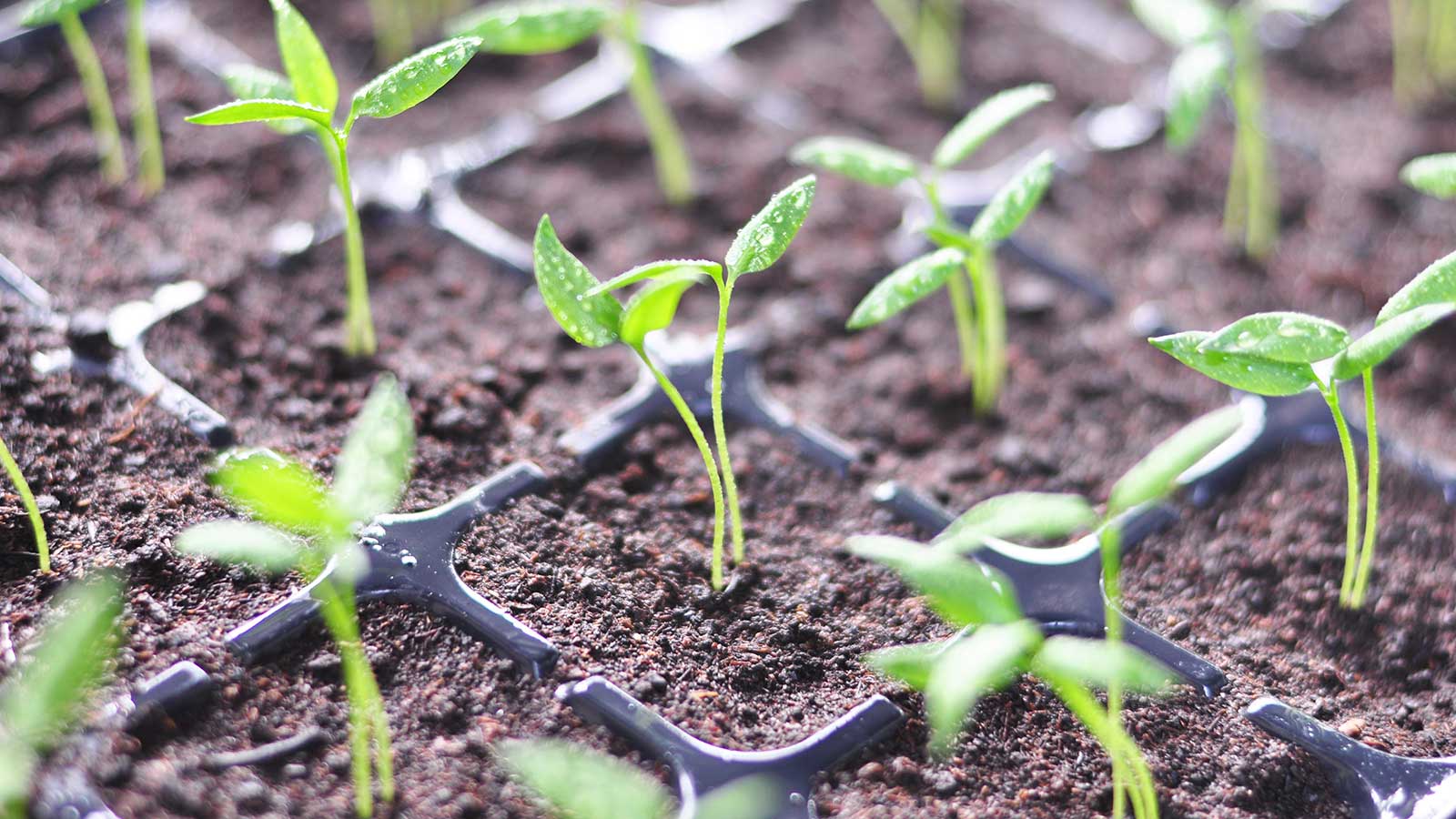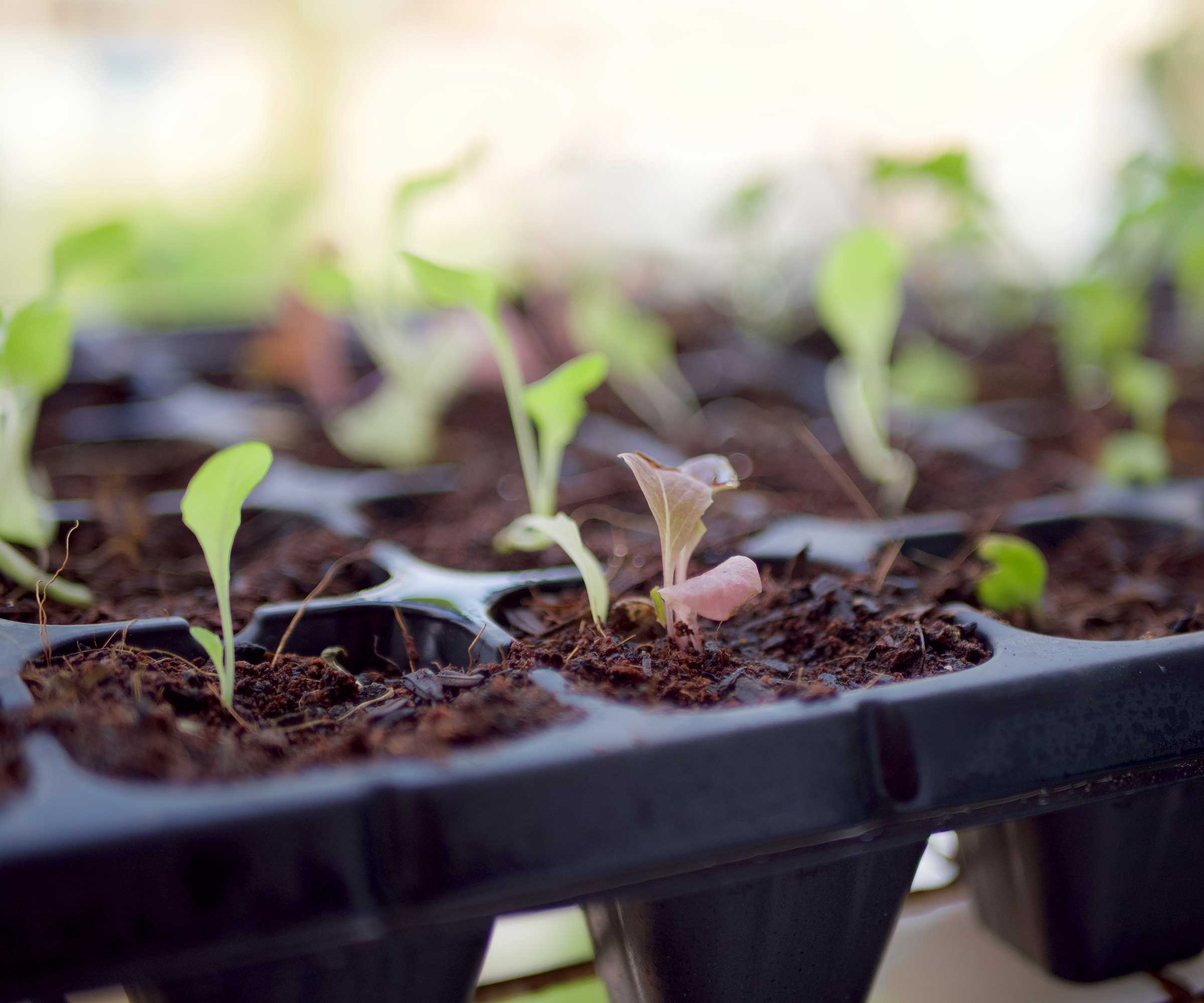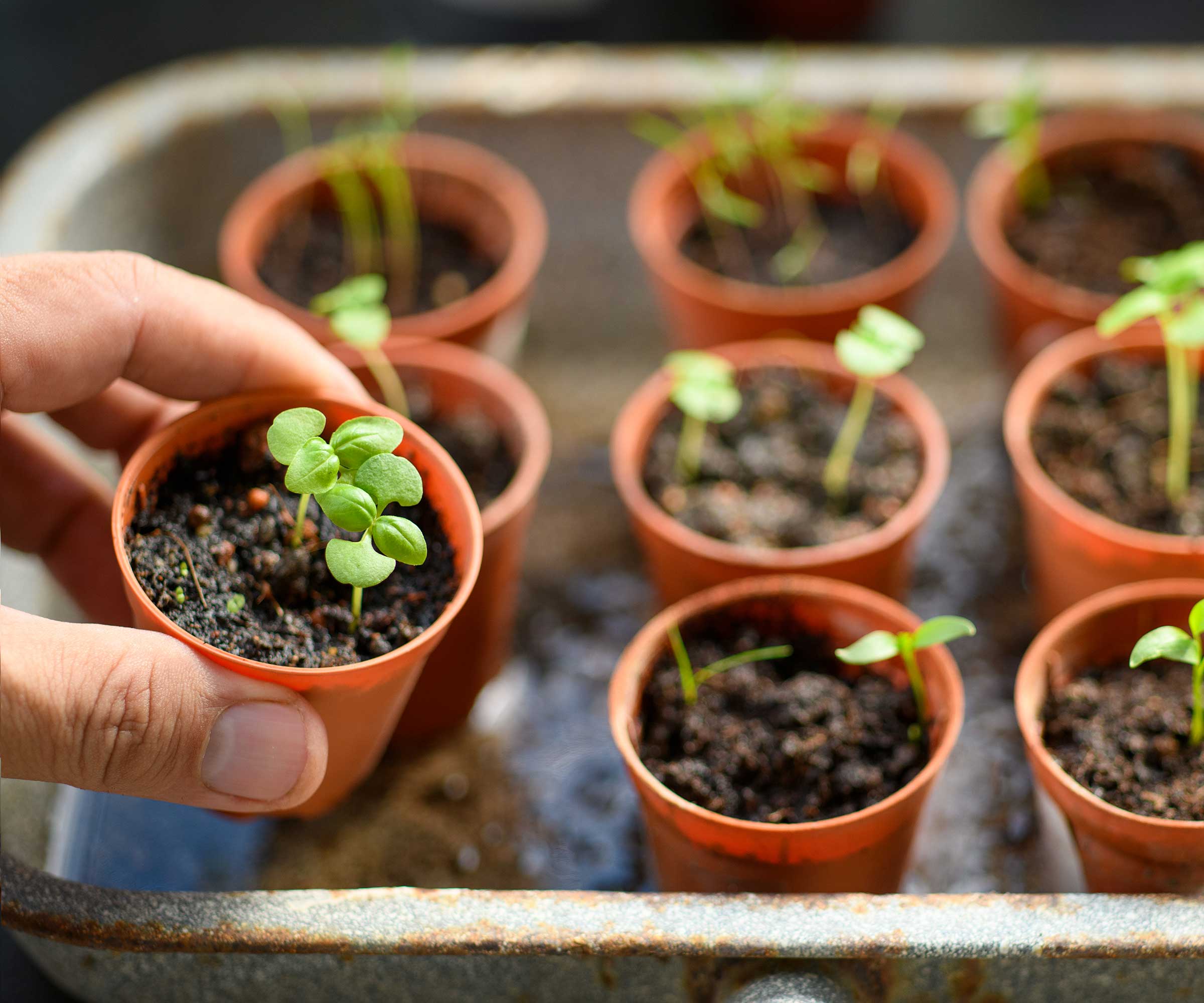
Q: I have planted lots of seeds in trays this spring, ready for potting on and planting out as the temperatures warm. However, I've noticed green mold forming on the soil in a number of the trays. What has caused this, and should I be concerned?
A: Growing plants from seed is super rewarding, but there are a few problems that can arise during the process, from leggy seedlings to the development of mold on the soil. The latter is generally caused by excessive moisture and humidity, according to John Negus, a gardening expert.
Don't worry, though – it's unlikely to do any harm to the seedlings themselves. However, it's an indicator that the growing conditions may not be conducive to strong and healthy growth, John explains, so it's worth addressing.

How to avoid green mold growing on your seedlings
It is really difficult to avoid mold growing on your seedling tray, John explains. This is because the fungal spores that cause it are everywhere all the time, and they like the same conditions that are necessary for seed germination and seedling growth.
However, there are some steps you can take that will reduce the risks, and encourage a healthier growing environment for your seedlings overall.
- Always use clean pots and fresh compost, such as Miracle-Gro's Seed Starting Potting Mix, available from Amazon. 'Don’t reuse old compost, and make sure you close the bag when it is not in use,' John says.
- Excessively watering is a common seed-sowing mistake. Try watering your seedlings from below, if possible. 'This means the surface of the compost is likely to be drier and not so appealing to fungal growth.'
- In fact, John says that if you give the pots a good soaking once the seeds have been sown, you may not need to water them again until after germination if the pots are kept covered and in shady and warm conditions.
- It's also important to ensure that seedlings are not overcrowded, and that there is plenty of air movement. This is because warm, still conditions create high levels of humidity which is really beneficial to fungal growth, John says.
- Finally, John advises pricking out the seedlings to transplant once they are large enough to handle. This means you can put them into fresh compost and space them out, which will help improve airflow and reduce humidity.

What if white mold is growing on your seedlings?
If a white fungal growth is combined with your seedlings collapsing or decaying, then they have succumbed to the common yet unfortunate disease known as 'damping off'. Again, it is caused by poor airflow and high humidity, and following the tips above can help to prevent it.
It's also a good idea to water seedlings using tap water rather than harvested rainwater, the Royal Horticultural Society adds. If you do decide to use water from your rain barrel, ensure it has been covered to reduce the risk of the water containing the damping off pathogens.
If you see signs of damping off, transplant any remaining healthy seedlings immediately into a different tray with fresh soil.
Overall, it all comes down to creating an optimal environment that allows seedlings to thrive. Put these tips above into place and you'll have a much better chance of growing all the healthy veggies and beautiful blooms that you envisioned this summer.







